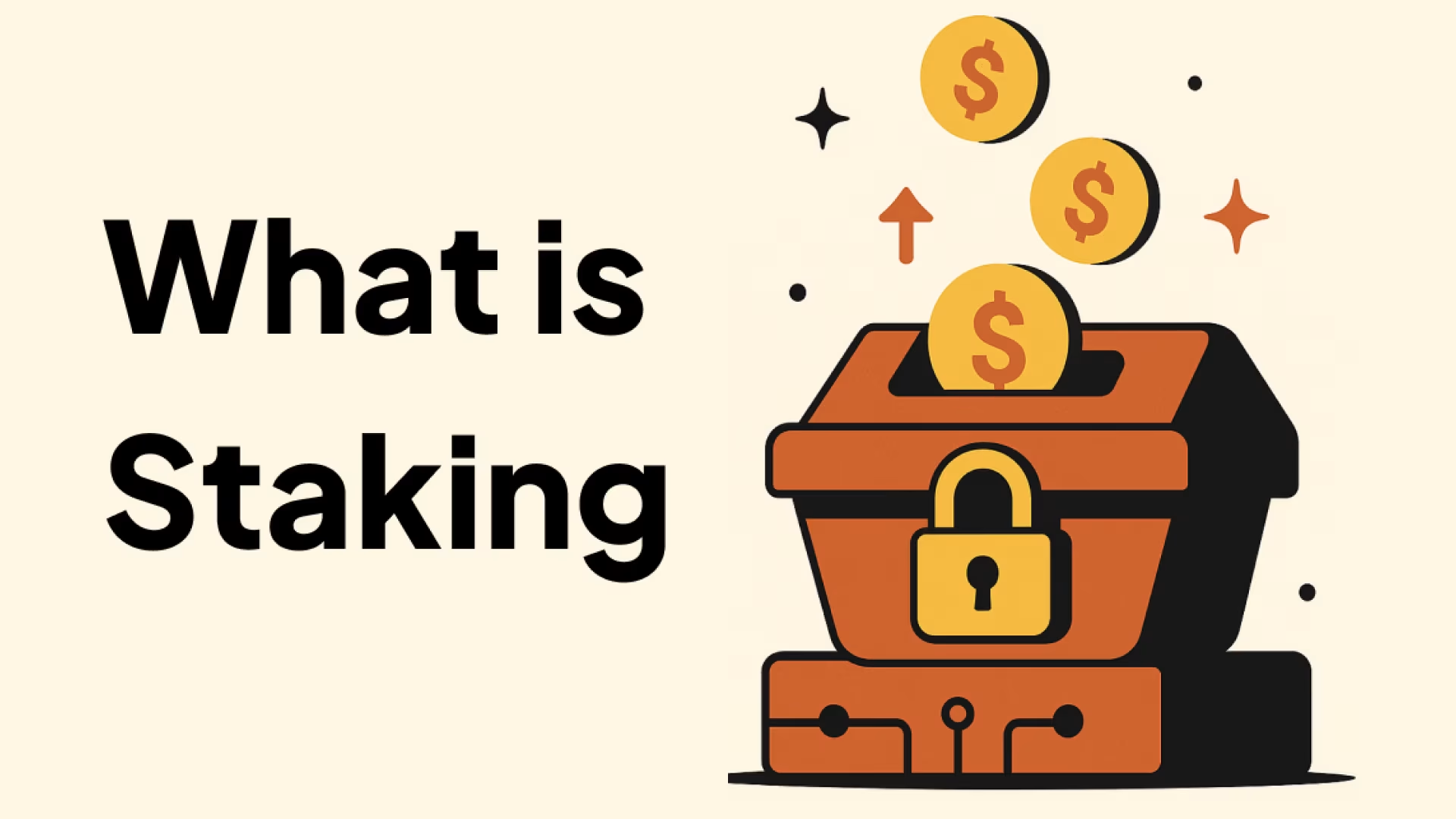Key Takeaways:
- Staking is a way of earning rewards while holding onto certain cryptocurrencies.
- Staking isn't available for every cryptocurrency.
- Staking offers several advantages for both individual investors and the broader blockchain ecosystem.
Understanding Cryptocurrency Staking
Staking in cryptocurrency offers a way for holders to earn rewards simply by holding and supporting their chosen digital assets. Think of it as earning interest on your savings account, but with your crypto.
How Does Staking Work?
At its core, staking involves participating in the maintenance and security of a blockchain network. Unlike traditional banking, where your money is held by a financial institution, staking allows you to directly support the network by holding specific cryptocurrencies in a compatible wallet.
The Mechanism Behind Staking
When you stake your cryptocurrency, you're essentially locking it up to help validate transactions on the blockchain. In return for this service, you earn rewards, which are typically paid out in the same cryptocurrency. This process is similar to how miners receive rewards for validating transactions in proof-of-work systems.
What are the Advantages of Staking?
Staking offers several advantages for both individual investors and the broader blockchain ecosystem:
- Passive Income: Earn regular rewards simply by holding and staking your crypto assets.
- Network Security: By staking, you contribute to the security and stability of the blockchain network.
- Lower Energy Consumption: Staking, especially in proof-of-stake systems, is more energy-efficient compared to proof-of-work mining.
- Potential for Appreciation: While not guaranteed, the value of staked assets can appreciate over time, adding to your overall returns.
Why Do Only Some Cryptocurrencies Have Staking?
Staking isn't available for every cryptocurrency. Take Bitcoin, for example—it doesn't support staking. To understand the reason behind this, it's important to explore the foundational technologies of different cryptocurrencies.
Most cryptocurrencies operate on a decentralized network, meaning there's no central authority like a bank managing transactions. Instead, these networks rely on a "consensus mechanism" to ensure all participants agree on the blockchain's state.
Many cryptocurrencies, including Bitcoin and the original version of Ethereum, utilize a consensus mechanism called Proof of Work (PoW). In PoW systems, the network requires substantial computational power to solve complex mathematical problems that validate transactions and secure the blockchain. Miners worldwide compete to solve these cryptographic puzzles, and the first to succeed gets the right to add a new "block" of verified transactions to the blockchain, receiving cryptocurrency rewards in return.
While Proof of Work is effective for simpler blockchains like Bitcoin's, which primarily functions as a ledger tracking transactions, it becomes less efficient for more intricate platforms. For instance, Ethereum, which supports a wide range of applications including decentralized finance (DeFi), initially used PoW but encountered scalability challenges due to high transaction volumes.
The intense computational demands of PoW can lead to longer transaction times and increased fees during periods of heavy network activity. Consequently, many newer or upgraded cryptocurrencies have adopted Proof of Stake (PoS) and its variations. PoS allows for staking by enabling participants to lock up their tokens to support network operations, offering a more energy-efficient and scalable alternative to Proof of Work. This shift not only facilitates staking but also enhances the overall performance and sustainability of the blockchain network.
Getting Started with Staking
Embarking on your staking journey involves a few straightforward steps:
1. Choose the Right Cryptocurrency
Not all cryptocurrencies support staking. Research and select a coin that uses a proof-of-stake or similar consensus mechanism, such as Solana or Ethereum.
2. Select a Compatible Wallet
Ensure you have a wallet such as Backpack Wallet that supports staking for your chosen cryptocurrency. Many exchanges and dedicated wallets offer staking features with user-friendly interfaces.
3. Stake Your Assets
Transfer your cryptocurrency to the staking wallet and follow the platform's instructions to begin staking. This often involves selecting the amount you wish to stake and confirming the transaction.
4. Monitor Your Rewards
Once you've staked your assets, you can monitor your rewards through your wallet or exchange dashboard. Rewards are typically distributed at regular intervals.
Types of Staking
Different staking models offer varying levels of involvement and reward structures:
- Solo Staking: Staking individually by locking up your own assets, requiring a significant investment to maximize rewards.
- Pooled Staking: Combining your assets with others to increase the chances of earning rewards, suitable for those with smaller holdings.
- Delegated Staking: Delegating your staking power to a validator who manages the technical aspects, allowing you to earn a portion of the rewards without direct involvement.
Risks and Considerations
While staking can be profitable, it's essential to be aware of potential risks:
- Market Volatility: The value of staked assets can fluctuate, impacting your overall returns.
- Lock-Up Periods: Some staking protocols require you to lock your assets for a set period, during which you can't access or trade them.
- Technical Risks: Security vulnerabilities in wallets or staking platforms could lead to loss of funds.
- Inflation: The introduction of new tokens through staking rewards can dilute the value of existing holdings.
Conclusion
Staking presents a viable opportunity for cryptocurrency holders to generate passive income while supporting the blockchain networks they believe in. By understanding how staking works, its benefits, and the associated risks, you can make informed decisions and potentially enhance your crypto investment strategy.


.png)

